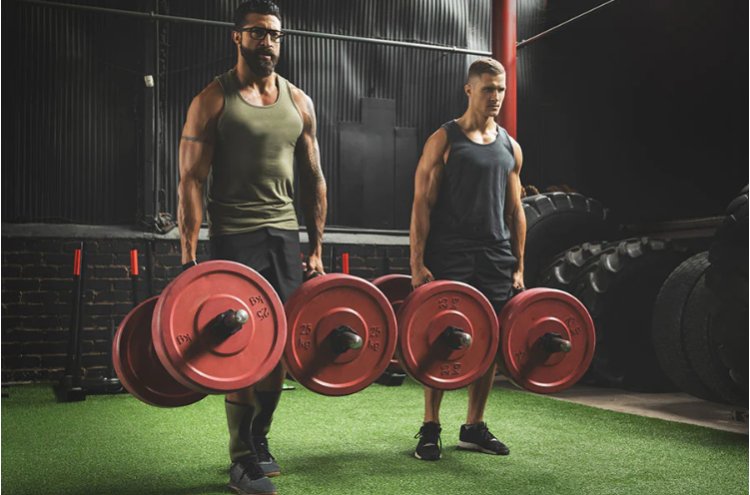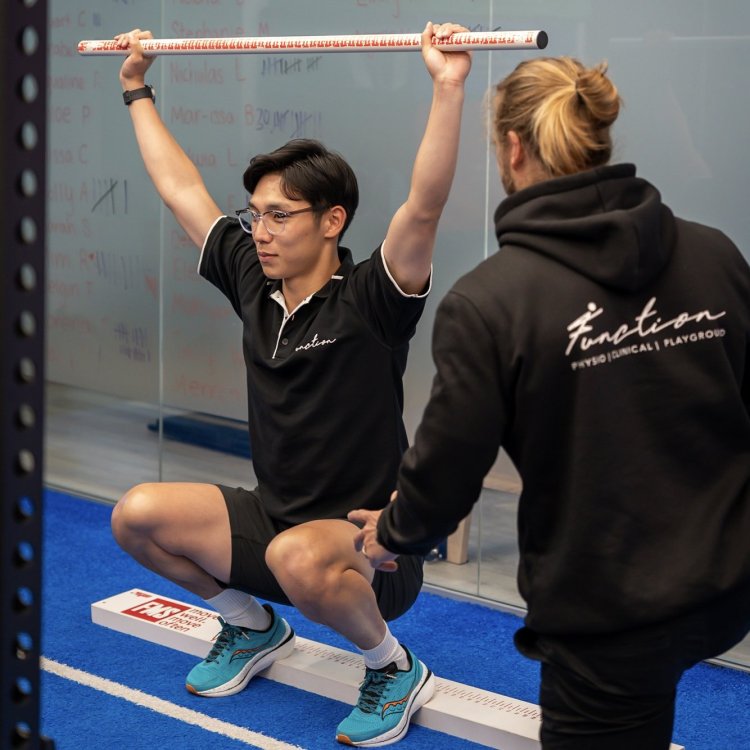Functional Fitness Workouts: Unlocking Your Full Potential
Discover the transformative power of Functional Fitness Workouts in this comprehensive guide. Elevate your fitness routine with expert insights, engaging exercises, and a holistic approach to well-being.

Introduction
Hi there, my name is John and welcome to my blog. Today I want to share with you what I’ve learned about functional fitness and how practicing it can help you unlock your full physical and mental potential. Functional training aims to mimic the way our bodies are meant to move in everyday life, strengthening the whole body and improving overall performance and well-being. By combining bodyweight exercises, calisthenics, and compound lifts with moderate cardio, you can get in the best shape of your life while reducing injury risk. Stick with me and by the end of this post I hope to convince you of the amazing benefits of a functional workout regimen.
Let’s start with some background on functional fitness. The idea behind it is that our bodies evolved to perform everyday tasks like carrying, pushing, pulling, lifting, squatting, and climbing. Thus, workouts that replicate these basic patterns of motion using full-body exercises are the most natural and effective way to build an athletic physique and functional strength. While isolation exercises targeting single muscles can be useful supplements, a solely isolated approach doesn’t develop the coordinated strength, balance, and motor control we rely on in everyday life. Functional exercises train the entire kinetic chain by engaging the core and multiple muscle groups simultaneously.
Some key principles of functional training include
- Compound exercises that work multiple muscle groups at once like squats, deadlifts, presses, rows and carries. These are much more effective for total-body development than exercises isolating one muscle.
- Focus on basic human movements like bending, lifting, pulling, pushing, and squatting rather than machines that isolate and limit ranges of motion. Our bodies evolved to move naturally, not in confined paths.
- Varied loading and body weight progressions. Things like sandbag lifts, sled pushes and multiple sets of pushups/pullups develop real-world strength better than fixed weight machines.
- Core engagement. Functional exercises naturally engage the core for stabilization unlike isolations where the core can remain disengaged. A strong core is essential for injury prevention.
- Metabolic conditioning. Adding short bursts of intense cardio like sled sprints or assault bike intervals keeps the heart rate elevated to develop work capacity and burn more fat.
The beauty of functional training is that it keeps workouts fresh and challenging by constantly changing the exercises and load. This prevents adaptation and plates hitting while spurring continual strength, balance and motor skills development. You’re also less likely to plateau. It also means you don’t need a fully equipped gym - bodyweight, weighted vests, sandbags, kettlebells, sleds or resistance bands can get the job done.
Now let’s dive into some of the amazing benefits you can expect from a regular functional fitness routine:
Increased Work Capacity and Conditioning
By training both strength and conditioning aspects, functional workouts leave you with increased work capacity - the ability to work at a high level of intensity for extended periods of time. This transferable fitness is invaluable for athletes as well as daily tasks like manual labor, long hikes or recreational activities. Short bursts of high-intensity metabolic conditioning sprinkled throughout strength training develops an elevated conditioning base and increased aerobic and anaerobic endurance. Your heart and lungs become more efficient at delivering oxygen while your muscles learn to function at a higher level without fatigue.
Enhanced Real-World Strength and Power
Because functional exercises replicate natural human movements, the strength you build transfers directly to everyday life. You’ll be able to lift heavier objects, push and pull with more force, complete laborious chores, engage in recreational sports, and mitigate injuries with a higher strength to bodyweight ratio. Power development through explosive compound movements like throws, jumps and sled pushes also pays huge dividends for athletic performance and injury prevention with robust muscular engagement.
Improved Movement Quality and Mobility
With a focus on executing multi-planar, full-range exercises correctly, functional training cultivates excellent mobility, stability and motor control. Your jointsmovethrough their fullest natural ROMswith precision instead of moving stiffly or compensating. Over time mobility restrictionsresolve, injury risk decreases and athletic movement patterns become second nature. Balancework like single-leg exercises also enhancesproprioception, the sense of where your body is in space.
Enhanced Bone Density and Connective Tissue Health
The increase in eccentric loading provided by exercises like pull-ups,rows and step ups directly stimulates osteoblast activity – new bone cellformation. Thisresults in significantly higher bone mineral density, protecting againstosteopenia and fractures in later life. Loadingmultiple planesof motion alsostrengthens connectivetissues liketendons andligaments resistingdegeneration. Strong bones and tissuesare essential for maintaining independence as we age.
Body Composition Transformation
Not only will functional exercises sculpt a more proportional, athletic physique, but the afterburn from metabolic conditioningsessions results in unparalleled fat loss. Short, intense bursts of activity like sledpushes, box jumps or battle ropes turn on "fat burning"genes, shuttle fatty acids directly into mitochondria for oxidation andkeepmetabolism elevated for hours post-workout. Meanwhile,compound strength trainingpreservesmusclemasslost during fatloss. The combination produces a lean, chiseled and stronger long-term physique.
Elevated Mental Toughness and Grit
While functional workouts are undoubtedly physically demanding, they also cultivateimportant psychological benefits.Pushing yourself throughchallenging full-body circuits, pushing a sled through fatiguerequiresgrit, determination and mental fortitude. Over time, this transfers to other areasof life where "going the extra mile" is neededdespite discomfort or doubt. Acute and chronic stress exposure fromintervaltraininghas even been shown toreduceteam anxiety and depression.
Reduced Risk of Chronic Disease
The anti-inflammatory andgrowth factor responses activated by compound lifts and metabolic conditioning lower disease risk tremendously. Exercise reduces blood pressure and cholesterol, boostingheart health.It also positivelyinfluenceshormonal andimmune function, supporting longevity. Studies show regular strength training lowers risk of obesity, type-2diabetes,cancer andAlzheimer’sby 40-60%. Just 2-3 functional sessionsweekly offersyearsofdisease protectionbetterthan mostmedications canprovide.
Increased Cognitive Performance
As little as 20 minutes of moderate exercise hasbeen shown toimprovedailyconcentration,problem solving andmemory encodingandretrieval. This is due to increased blood flowdeliveringmore oxygen, glucose andnutrients tothe brain. On an intermittent basis, high-intensity exercise may evengenerate new neurons in the hippocampus through neurogenesis, criticalformaintaining sharpnessthroughout life. Athletesdemonstrate betterthinking skillsthan their sedentary peers longitudinally aswell.
Enhanced Work Performance and Productivity
Feeling and performing at your physical and mental best has a profoundimpact in your professional life too. Recentstudies linkmoderate to high activity levels withhigherjob performance ratings, fewer sick days,greater focus andproductivity atwork. Elevated mood,sharperthinking,improved confidence and stress management from exercisingallbenefit your career directly. Studiesfind physically activeemployeeshave 20-30%fewer accidents andinjuriesessential in industries likeconstruction.

Deeper Sleep and Recovery
The risein growth hormone anddeclinein cortisol thatexercise induces directlyenhance rejuvenative sleeppatterns. Additionally,metabolicconditioning sessionsshortly before bedtimehavebeen linked toa 15%increase indeep,restorativesleep. More HGHand lessstressimproverepair of worn tissueduring slumber, accelerating recoveryfromsessions. Fullyrecoveredmusclesrecoverstrongertoo. Functionallyfit individualsreportsuperiormental clarity throughoutthe day aswell thanks tobetterquality rest eachnight.
Increased Social Well-Being
Notexercising socially isolatesmany people.Functional workoutsarea great wayto connect andformfriendships in a supportiveenvironment. Many gyms now evenoffer circuit-style classes bringingcommunities together. Researchshowsimprovedcardiovascularhealth,lower stressanddepression throughgroup fitnessdue tosocialsupport.Relationships formedin these settings lastfor years afterwards makinglifemore fulfilling overall.
These are just someof themeasurablewayscompleting regular functional trainingprogramscanprofoundly transformatelife bothphysically andpsychologically. Beforewe get intosomedream workouts, I wanttocover somepractical tipsforsuccessful implementation.
Intensityis key. While avoiding injury withgoodprogression, you wanttochallenge yourself tothepoint ofmomentaryfailure by theendofeach set.This istheonly wayto spurcontinued adaptation. Forbodyweight strength, aim for3 sets of8-12 max repetitions whileslower compoundliftsshould be 5-8 reps tofailure. Withintervals,pick atargetheart rateneedandmaintain it forshort burstsintermittently. Thisintense stimulusdrivestruegains.
Progressions areessential toprevent plateaus. Forlifts, slowlyincrease loadsover time.For bodyweight, add pistol squats, one arm pushupsor weighted vestswhen multiplerepsbecometooeasy.Withintervals,graduallyshorten restperiodsor increase inclineto maintainchallenge.Changeexercises occasionallyas well.Variety issecond onlytointensityfor results.
- While primarily focusing on strength and mobility, functional workouts also provide cardiovascular benefits. The intermittent bursts of higher intensity metabolic conditioning raise your heart rate and work capacity.
- Exercises like squats, lunges, presses and carries work multiple muscle groups simultaneously through compound motions. This is more efficient for strength development and injury prevention compared to isolation moves targeting single muscles.
- Form and quality of movement are extremely important in functional training to avoid injury and get the most out of each exercise. Go through full ranges of motion with control while engaging your core for stabilization.
- As well as bodyweight exercises, accessories like kettlebells, dumbbells, sandbags, sleds or weight vests can add challenge. Their uneven surfaces recruit stabilizer muscles better than machines.
- Cross training methods like running, rowing, swimming or cycling on off days are beneficial for recovery, cardiovascular health and injury prevention when mixed with functional strength sessions.
- Programs should incorporate progressive overload over time through loading increases, harder variations, fewer rest periods or density techniques like EMOM to drive continued adaptation.
FAQs
What's Your Reaction?




















